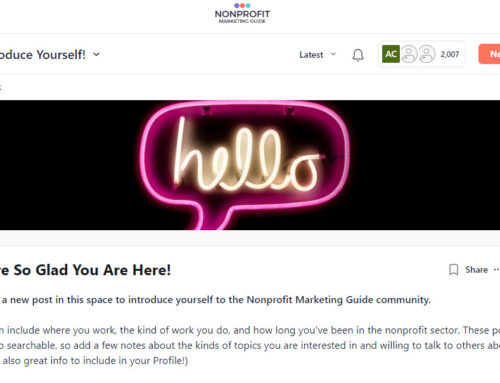
What are all of the things that nonprofit communications teams need to think about and potentially act on to be successful?
Of course, it’s a really, really long list of potential items.
To put some structure around it, so that you can start to understand your choices and then make them, we’ve identified ten keys to nonprofit communications success. Within those keys, there are 60+ activities and skills that we’ve included in our recommended professional development plans. You can get those plans in the Free Templates and Worksheets section of our community.
The 10 Keys to Nonprofit Communications Success
You’ll find most of this section organized according to what we call the 10 Keys to Nonprofit Communications Success.
Where do nonprofit communications teams need to focus to be successful? After more than twenty years of working in nonprofit communications and marketing, we at Nonprofit Marketing Guide believe it comes down to these guiding principles. We suggest nonprofit communicators use the 10 keys to think about their own professional development.
1. Marketing Plans and Strategies. Defining your goals, strategies, objectives, and tactics. This includes multi-year strategies, annual communications timelines, editorial calendars, and other planning documents.
2. Understanding Your Community and Prioritizing Targets. Knowing your communities and target audiences so you can better serve them. This includes building personas, surveys, and email list management and segmenting.
3. Creating Relevant Messaging and Engaging Content. Attracting and keeping your participants, supporters, and influencers engaged in your work. This includes focused messaging such as donor communications (e.g., annual reports and thank you notes) and messaging campaigns to raise awareness of issues.
4. Communications Channel Management. Understanding and following best practices for using various communications channels, including email, websites and blogs, social media, media relations, print, etc.
5. Brand Consistency and Reputation Management. Ensuring a consistent look, feel, and personality across your communications. Managing awareness of the organization itself and its reputation. Also includes thought leadership.
6. Writing Skills and Content Creation. Understanding and mastering the seven styles of nonprofit writing and how to repurpose and curate content. Start the Certificate on Writing Skills and Content Creation (All-Access Pass Required).
7. Visual Content Skills and Creation. Developing skills to create and manage video, photography, and graphic design.
8. Communications Team Management, Relationships, and Boundaries. Developing positive working relationships, building and managing a communications team, setting appropriate boundaries, and caring for yourself at work.
9. Workflows, Processes, and Productivity. Developing, documenting, and improving the processes that make a communications team run smoothly. Includes the tools you use for your personal productivity as well as the productivity of the team.
10. Measuring Success and Optimizing Your Approaches. Discerning what matters most and how to measure it. Testing and optimizing your work to improve results over time.
No comms team — especially a team of one — will be an expert at all these things. That’s not the point of the list!
The point is to give you a road map for building your comms effectiveness. It’s up to you to decide which keys are most important and map out your journey.






